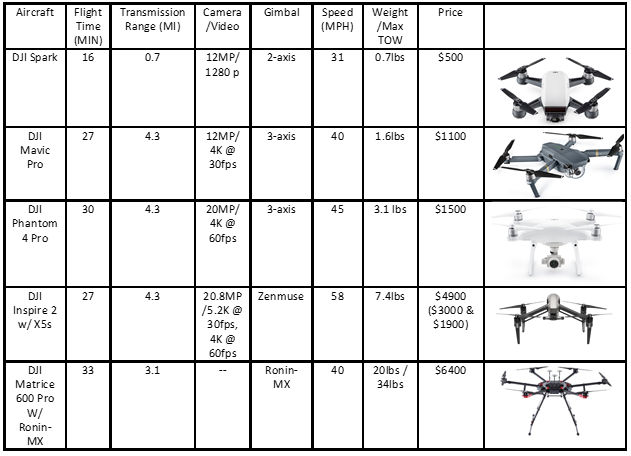An Unmanned Aerial System (UAS) includes the 1) aircraft or airframe, 2) its payload, and 3) the ground control system/station. Table 1 contains a short overview of the aircraft we recently purchased for use here at Warnell. They range from a small DJI Spark that is suitable for practicing flying indoors to a DJI Matrice 600 Pro which has a maximum payload of 34 pounds. Once you obtain your Remote Pilot’s certificate, you will might be able to check these units out for your research purposes.
Table 1. The Warnell sUAS fleet.

The Spark, Mavic Pro and Phantom 4 pro do not have detachable cameras (rumors are that the Phantom 5 will have a detachable camera mechanism). There is no easy way to mount extra sensors on these aircraft. The Inspire 2 and the Matrice 600 Pro do have an interchangeable gimbal system, thus the ability to mount RGB, thermal, FLIR, and other sensors. We have ordered a Micasense RedEdge-M multispectral sensor to mount to these aircraft and are working on purchasing a LiDAR unit suitable for mounting on the Matrice.
Each of these aircraft utilize the same ground control system – the DJI Go 4 app (or the DJI GCS appp, or a number of other 3rd party apps). This is the reason we purchased DJI instead of their competitors. So, once you learn to use the ground control station to fly the Spark, you already know how to fly the Matrice. Keep in mind though, there are aircraft-dependent concerns you must address before and while flying.
DJI Go 4 app overview/demo